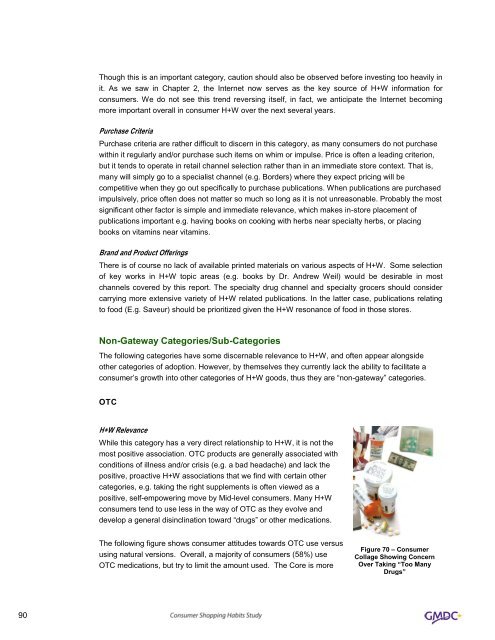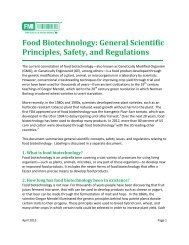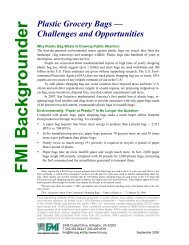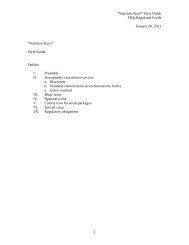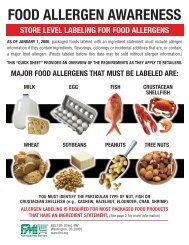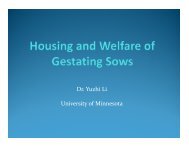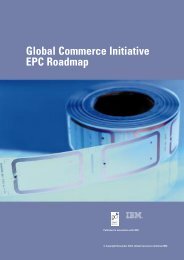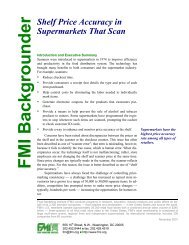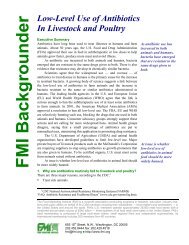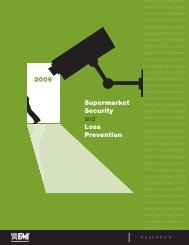Consumer Shopping Habits for Wellness and Environmentally ...
Consumer Shopping Habits for Wellness and Environmentally ...
Consumer Shopping Habits for Wellness and Environmentally ...
Create successful ePaper yourself
Turn your PDF publications into a flip-book with our unique Google optimized e-Paper software.
Though this is an important category, caution should also be observed be<strong>for</strong>e investing too heavily in<br />
it. As we saw in Chapter 2, the Internet now serves as the key source of H+W in<strong>for</strong>mation <strong>for</strong><br />
consumers. We do not see this trend reversing itself, in fact, we anticipate the Internet becoming<br />
more important overall in consumer H+W over the next several years.<br />
Purchase Criteria<br />
Purchase criteria are rather difficult to discern in this category, as many consumers do not purchase<br />
within it regularly <strong>and</strong>/or purchase such items on whim or impulse. Price is often a leading criterion,<br />
but it tends to operate in retail channel selection rather than in an immediate store context. That is,<br />
many will simply go to a specialist channel (e.g. Borders) where they expect pricing will be<br />
competitive when they go out specifically to purchase publications. When publications are purchased<br />
impulsively, price often does not matter so much so long as it is not unreasonable. Probably the most<br />
significant other factor is simple <strong>and</strong> immediate relevance, which makes in-store placement of<br />
publications important e.g. having books on cooking with herbs near specialty herbs, or placing<br />
books on vitamins near vitamins.<br />
Br<strong>and</strong> <strong>and</strong> Product Offerings<br />
There is of course no lack of available printed materials on various aspects of H+W. Some selection<br />
of key works in H+W topic areas (e.g. books by Dr. Andrew Weil) would be desirable in most<br />
channels covered by this report. The specialty drug channel <strong>and</strong> specialty grocers should consider<br />
carrying more extensive variety of H+W related publications. In the latter case, publications relating<br />
to food (E.g. Saveur) should be prioritized given the H+W resonance of food in those stores.<br />
Non-Gateway Categories/Sub-Categories<br />
The following categories have some discernable relevance to H+W, <strong>and</strong> often appear alongside<br />
other categories of adoption. However, by themselves they currently lack the ability to facilitate a<br />
consumer‘s growth into other categories of H+W goods, thus they are ―non-gateway‖ categories.<br />
OTC<br />
H+W Relevance<br />
While this category has a very direct relationship to H+W, it is not the<br />
most positive association. OTC products are generally associated with<br />
conditions of illness <strong>and</strong>/or crisis (e.g. a bad headache) <strong>and</strong> lack the<br />
positive, proactive H+W associations that we find with certain other<br />
categories, e.g. taking the right supplements is often viewed as a<br />
positive, self-empowering move by Mid-level consumers. Many H+W<br />
consumers tend to use less in the way of OTC as they evolve <strong>and</strong><br />
develop a general disinclination toward ―drugs‖ or other medications.<br />
The following figure shows consumer attitudes towards OTC use versus<br />
using natural versions. Overall, a majority of consumers (58%) use<br />
OTC medications, but try to limit the amount used. The Core is more<br />
Figure 70 – <strong>Consumer</strong><br />
Collage Showing Concern<br />
Over Taking “Too Many<br />
Drugs”<br />
90


